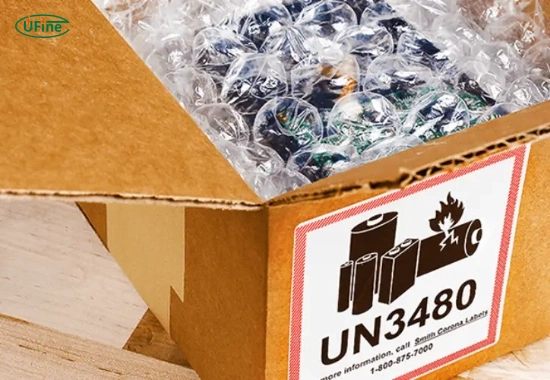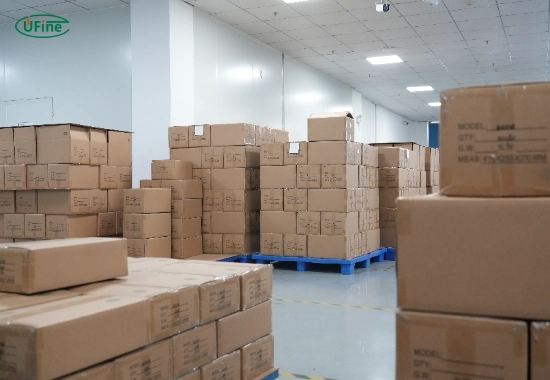Shipping lithium batteries require meticulous attention due to their classification as dangerous goods. This article delves into the intricate procedures and regulations for safely shipping lithium batteries. From understanding packaging guidelines to exploring transportation methods, it provides a comprehensive guide for navigating this complex process.
Part 1. Shipping lithium batteries regulations and guidelines
Shipping lithium batteries involves strict adherence to regulations and guidelines to ensure safety, mitigate risks, and comply with legal requirements. These regulations are instituted by various international and national bodies, including the International Air Transport Association (IATA), the International Maritime Dangerous Goods (IMDG) Code, and federal regulatory agencies like the Department of Transportation (DOT) in the United States.
Overview of Shipping Regulations
Shipping regulations governing lithium batteries span international and domestic spheres, adhering to standards like UN38.3, IATA, and specific national regulations. These standards outline stringent guidelines ensuring safe transportation. International regulations, such as those established by IATA, offer comprehensive guidelines for air transport, encompassing packaging, labeling, and documentation requirements. On a national level, regulations by organizations like the Department of Transportation (DOT) in the US and similar bodies worldwide set specific guidelines to ensure the safe handling and transport of lithium batteries across various modes.
How do you package lithium-ion batteries for shipping?
- Choosing Suitable Packaging: Use packaging specifically designed for lithium batteries, ensuring it meets regulatory standards. This often includes sturdy, non-conductive materials with insulation to prevent damage.
- Insulating and Securing Batteries: Each battery should be protected to prevent short circuits or damage—secure individual batteries to avoid movement within the package.
- Packaging Integrity: Ensure the package is robust enough to withstand handling and transportation stress without compromising the batteries inside.
- Labeling Requirements: Affix appropriate labels indicating the nature of the contents and any necessary warnings or handling instructions. Labels should comply with regulatory standards.
Part 2. Lithium battery shipping label and documentation
1. Lithium Battery Shipping Label
“Lithium Battery” Label: Indicating the presence of lithium batteries within the package.
Pictograms and Hazard Labels: These symbols convey information about the potential hazards associated with lithium batteries, such as fire or electrical risks.
Handling Instructions: Labels indicating proper handling instructions to ensure safety during transport and storage.
Contact Information: Details for emergency contact in case of incidents or mishandling.
Adhering to these labeling requirements is crucial for carriers and handlers to recognize and handle lithium battery shipments appropriately.
2. Lithium Battery Shipping Documentation
Shipping Declarations: Providing detailed information about the batteries being shipped, including their classification, quantity, and packaging compliance.
Safety Data Sheets (SDS): Comprehensive information about the hazardous properties of lithium batteries, detailing safety measures for handling, storage, and transport.
Customs Declarations: Accurate customs declarations are vital for international shipments, outlining contents, value, and applicable duties or taxes.
Transport Documents: Specifying transportation mode, carrier details, and shipment tracking information.
Part 3. Transportation methods and restrictions
1. Air FreightWhen shipping lithium batteries via air freight, specific documentation is necessary to comply with the regulations:
Shipper’s Declaration for Dangerous Goods: This document contains details about the shipment, including battery type, quantity, packaging, and compliance with regulations.
Air Waybill: Essential for air transport, it includes shipment details, carrier information, and tracking numbers.
Packing List: Provides a detailed list of all items in the shipment, specifying the type and quantity of lithium batteries.
Safety Data Sheets (SDS): These sheets offer comprehensive information about the hazardous properties of the batteries and precautions for safe handling.
2. Sea Freight
Shipping lithium batteries via sea freight requires specific documentation to adhere to international maritime regulations:
Dangerous Goods Declaration (IMDG): Details the shipment’s contents, including battery classification, packaging, and quantity.
Bill of Lading: A vital document acknowledging receipt of goods for shipment, providing details about the cargo, consignee, and carrier information.
Packing Certificate: Certifies that the packaging of lithium batteries complies with IMDG Code requirements, ensuring safe transport by sea.
Safety Data Sheets (SDS): Similar to air freight, SDS for lithium batteries are necessary for sea transport, providing comprehensive safety information.
3. Land Freight
Transporting lithium batteries via land freight also requires specific documentation:
Transportation Contract: Outlines the terms and conditions of the transportation service, specifying responsibilities, liabilities, and delivery details.
Shipping Manifest: Details all items being transported, including the type and quantity of lithium batteries, facilitating inventory and tracking.
Safety Data Sheets (SDS): Essential for ground transport, SDS provides safety information to handlers and responders in case of emergencies.
Customs Documentation: Depending on international or domestic transport, customs paperwork may be necessary to comply with import/export regulations.
Part 4. Which products have lithium batteries?
Consumer Electronics: Devices like smartphones, laptops, tablets, cameras, and portable gaming consoles often utilize lithium batteries due to their high energy density and rechargeability.
Medical Devices: Many medical devices, such as portable oxygen concentrators, defibrillators, and various monitoring equipment, rely on lithium batteries for their power source.
Power Tools: Cordless power tools, including drills, saws, and screwdrivers, frequently employ lithium batteries due to their lightweight and high-energy output.
Electric Vehicles (EVs): Electric cars, bikes, scooters, and other vehicles use lithium-ion batteries for their energy storage capabilities.
Aerospace Equipment: Aviation and aerospace technologies, including aircraft, drones, and satellites, often incorporate lithium batteries for their power needs.
Energy Storage Systems: Lithium batteries are integral in energy storage systems for renewable energy sources like solar or wind power, providing efficient energy storage solutions.
Wearable Technology: Smartwatches, fitness trackers, and other wearable devices commonly utilize lithium batteries due to their compact size and long-lasting power.
Part 5. Summary
In this thorough “Shipping Lithium Batteries Guide,” recognizing the broad spectrum of products embedded with lithium batteries proves pivotal. Understanding these varied applications, from consumer electronics to medical devices, power tools, and even aerospace equipment, is essential to navigating the comprehensive shipping protocols for safe and compliant transportation. Grasping the prevalence of lithium batteries across diverse industries underscores the guide’s importance in ensuring their secure and regulated shipment.
Part 6. FAQs
-
What are the rules for shipping lithium-ion batteries?
Regulations vary by mode of transport and location. Generally, batteries must comply with specific packaging, labeling, and documentation requirements set by transportation authorities like IATA or DOT. -
Can you mail lithium batteries internationally?
Yes, lithium batteries can be shipped internationally. Still, there are strict guidelines and restrictions regarding their packaging, quantity, and mode of transport, depending on each country’s specific regulations and the carrier used. -
What are FedEx’s rules for shipping lithium batteries?
FedEx follows regulations set by the IATA (International Air Transport Association) and has specific guidelines for shipping lithium batteries. These include packaging, labeling, documentation, and restrictions on the types and quantities of batteries that can be shipped. -
Can I ship lithium batteries with DHL?
DHL allows the shipping of lithium batteries but under strict guidelines and adherence to IATA regulations. Packaging, labeling, and documentation must comply with their specific rules for safe transportation. -
Why lithium batteries cannot be shipped?
Lithium batteries can be shipped, but restrictions exist due to their potential fire risk. They need proper packaging, labeling, and handling to ensure safety during transportation, especially by air, where stringent rules apply to minimize risks.
Related Tags:
More Articles

How to Choose the Best Floor Scrubber Battery for Commercial Cleaning?
Selecting the ideal floor scrubber battery ensures a long runtime, rapid charging, and minimal maintenance for efficient commercial cleaning operations.
Battery for Blower vs Battery for Leaf Vacuum: Which One Should You Choose?
Battery for blower vs leaf vacuum—learn the key differences in power, fit, and runtime to choose the right battery for your outdoor tool needs.
How to Choose the Right Battery for Blower?
Choosing the right blower battery? Consider voltage, capacity, chemistry & usage. This guide helps match the best battery for peak performance.
How to Choose the Best Insulated Battery Box for Lithium Batteries?
Choosing the Best Insulated Battery Box for Lithium Batteries? Discover key factors such as size, material, and safety for optimal protection and performance.
7 Critical Elements on a Lithium Battery Shipping Label
What must be on a lithium battery shipping label? Learn 7 key elements to ensure safety, legal compliance, and correct handling across all transport modes.






